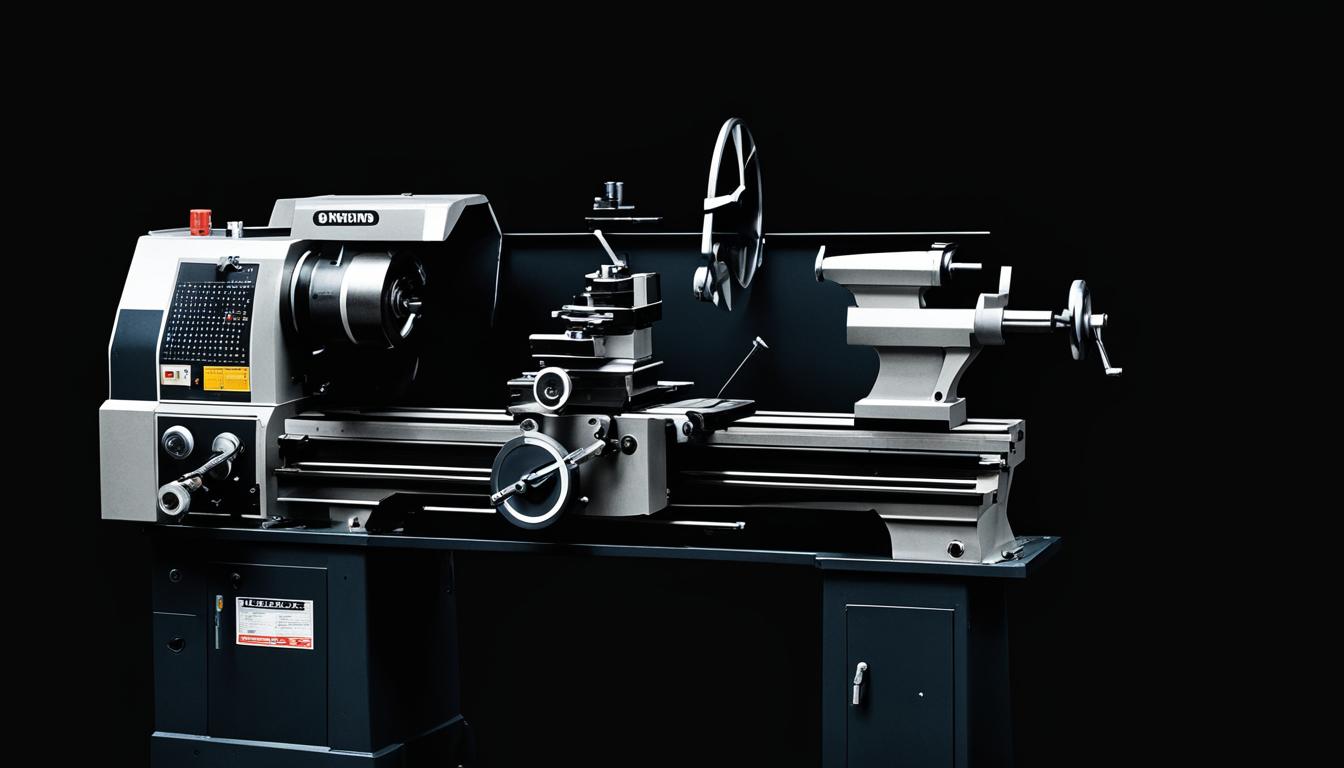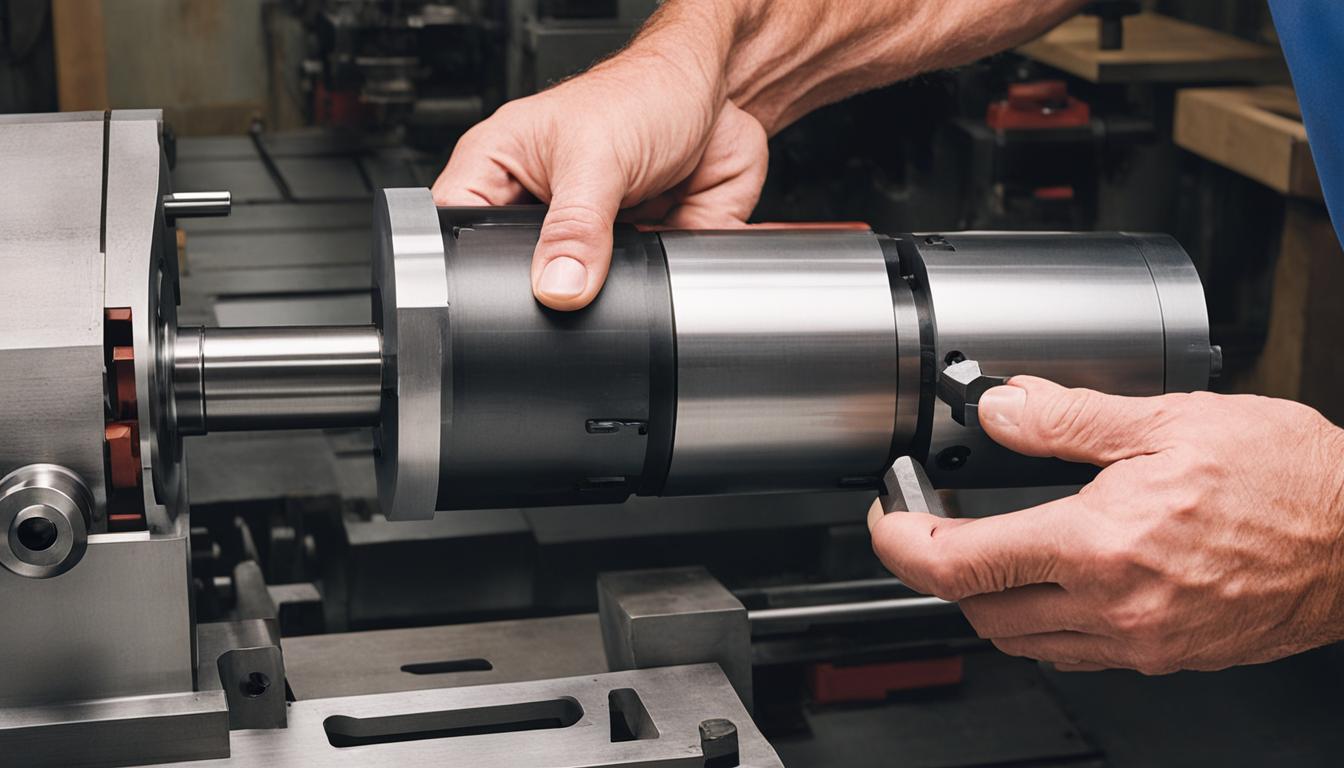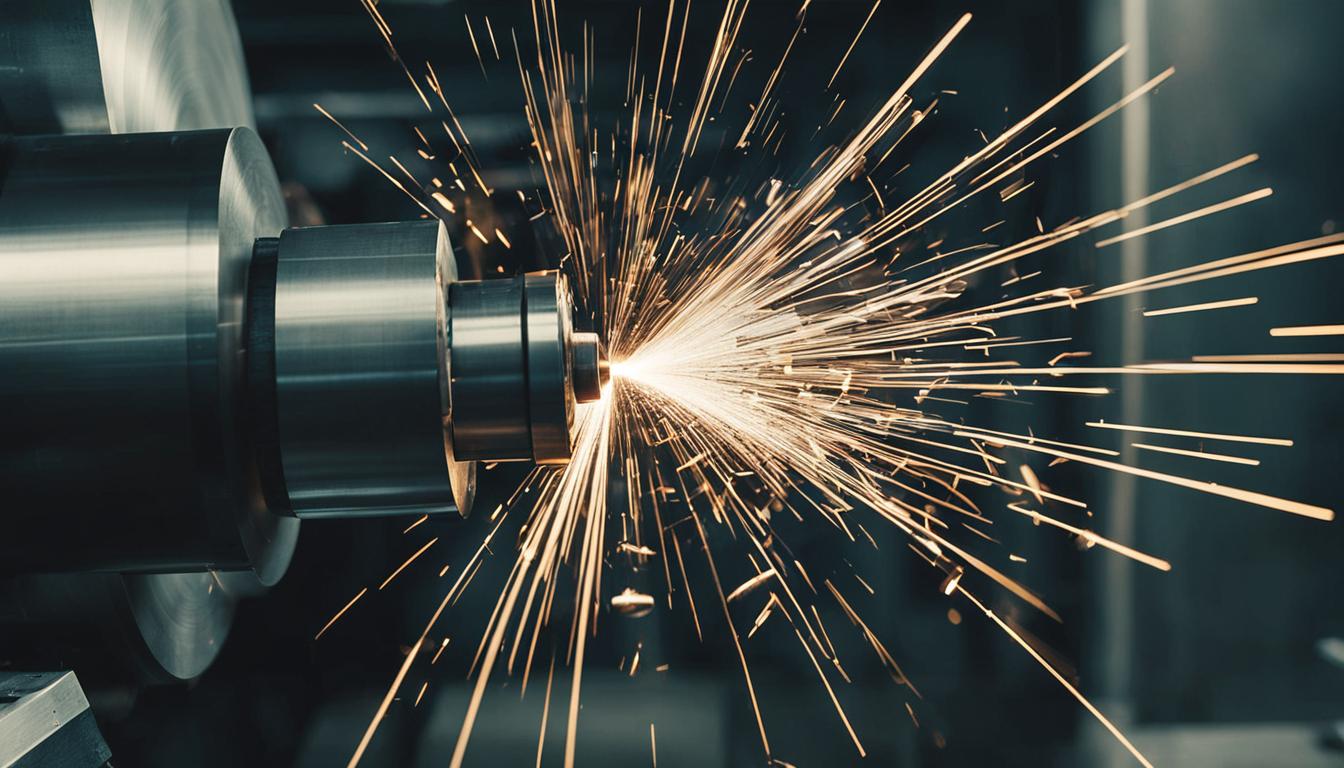A lathe is a fundamental machine tool in the field of machining, used to shape and form materials through rotational cutting. It operates by spinning a workpiece at high speeds while a cutting tool moves along its axis, removing material to create cylindrical or conical shapes. Lathes are versatile and can perform various operations such as turning, facing, drilling, boring, and threading. They are essential in manufacturing industries, producing components for automotive, aerospace, and consumer goods sectors.
Modern CNC lathes offer precision control and automation, allowing for complex part production with minimal human intervention. The lathe’s ability to create symmetrical objects with high accuracy makes it indispensable in both small-scale workshops and large manufacturing facilities. Understanding lathe operation is crucial for machinists, engineers, and anyone involved in metal or woodworking, as it forms the basis for many advanced machining processes and techniques.
- A lathe is a machine tool used in machining to shape wooden or metallic products.
- It has been in existence for centuries, with its origins dating back to ancient Egypt.
- Lathe machines are widely used in various industries for fabricating operations such as sanding, drilling, cutting, and turning.
- They are known as the “Mother of All Machine Tools” due to their versatility and ability to perform a wide range of tasks.
- Lathe machines are essential equipment in both the woodworking and metalworking industries.
What is a Lathe?
A lathe machine is a versatile tool used in machining operations. It functions by rotating a workpiece about an axis while a stationary cutting tool removes material from the workpiece to shape it. This process allows for the creation of various cylindrical shapes, including cylinders, cones, and spheres.
The lathe machine consists of several essential parts:
- Headstock: This component houses the main motor and spindle, responsible for rotating the workpiece.
- Tailstock: Located at the opposite end of the headstock, the tailstock provides support for the workpiece during machining operations.
- Spindle: The spindle is connected to the headstock and rotates the workpiece at a desired speed.
- Cutting Tools: The cutting tools, such as turning tools, facing tools, and parting tools, are fixed in toolholders and used to shape the workpiece.
The working principle of a lathe machine involves placing the workpiece between the headstock and tailstock, with the workpiece securely attached to the spindle. As the spindle rotates, the cutting tool is brought into contact with the workpiece to remove material and shape it according to the desired specifications.
There are different types of lathe machines available, each designed for specific applications:
- Engine Lathes: Used for a wide range of machining processes, including turning, drilling, and boring.
- Straight Bed Lathes: These lathes have a flat bed, making them suitable for long and heavy workpieces.
- Turret Lathes: Equipped with a turret that holds multiple cutting tools, allowing for faster and more efficient machining.
- Speed Lathes: Designed for high-speed operations, primarily used for light-duty and small-scale projects.
Understanding the basics of lathe machines is essential for anyone involved in machining operations, as these machines play a crucial role in shaping and transforming raw materials into finished products.
Types of Lathe Machines
When it comes to machining, there are several types of lathe machines that are commonly used. Each type has its own unique features and applications. Let’s take a closer look at some of the most popular types:
- Engine Lathes: These lathes are widely used in industrial settings and are capable of drilling and boring metal pieces. Engine lathes are known for their versatility and ability to handle heavy-duty work.
- Speed Lathes: As the name suggests, speed lathes are designed for high-speed cutting operations on wooden pieces. They are commonly used in woodworking shops and are ideal for jobs that require quick and precise cuts.
- Turret Lathes: Turret lathes are known for their ability to produce identical workpieces. They are equipped with a turret that can hold multiple cutting tools, allowing for efficient and precise machining.
- Tool Room Lathes: Tool room lathes are renowned for their high accuracy and precision. They are often used in tool and die shops for jobs that require tight tolerances and intricate cuts.
- Glass Lathes: These specialized lathes are used for shaping delicate glassware such as lenses, tubes, and bottles. Glass lathes require a high level of skill and precision due to the fragile nature of the material.
Each type of lathe machine has its own unique advantages and applications, making it important to choose the right one for your specific machining needs.
| Type | Applications |
|---|---|
| Engine Lathes | Industrial drilling and boring |
| Speed Lathes | Woodworking and quick precision cuts |
| Turret Lathes | Producing identical workpieces |
| Tool Room Lathes | High accuracy and precision machining |
| Glass Lathes | Shaping delicate glassware |
Difference Between a Metal Work Lathe and a Wooden Work Lathe
While most lathes have similar functions, there are differences between those used for metal work and those used for wood work. Metal work lathes and wood work lathes have different specifications and capabilities, tailored to the specific requirements of each material.
Advantages of Metal Work Lathes:
- Powerful engine: Metal work lathes are equipped with a robust engine that provides the necessary power to work on tough metals.
- High rotation speed: Metal work lathes are designed to rotate at higher speeds, allowing for efficient material removal and precise machining.
- Larger cutting tools: Metal work lathes employ larger and sharper cutting tools that can withstand the demands of metalworking.
- Versatility: Metal work lathes can handle various metal materials, making them ideal for a wide range of applications in industries such as automotive, aerospace, and manufacturing.
Importance of Metal Work Lathes:
Metal work lathes play a crucial role in the metalworking industry. Their advantages make them essential for shaping and machining metal products with precision and efficiency. Whether it’s turning complex shapes, threading, drilling, or facing, metal work lathes offer the necessary power and flexibility to meet the demands of modern metal fabrication.
Advantages of Wood Work Lathes:
- Lower engine power: Wood work lathes operate with a lower engine power, optimized for working on softer and less dense materials.
- Slower rotation speed: Wood work lathes rotate at slower speeds, allowing for better control and smoother cutting when working with wood.
- Smaller cutting tools: Wood work lathes use smaller and less sharpened cutting tools, suitable for shaping wood without causing excessive damage or tear-out.
- Precision in detail: Wood lathes enable woodworkers to create intricate designs and decorative elements with precision and finesse.
Importance of Wood Work Lathes:
Wood work lathes are invaluable tools for woodworking enthusiasts and professionals alike. They allow for the creation of beautifully crafted wooden objects, such as furniture, sculptures, and intricate ornaments. Wood work lathes facilitate the shaping, smoothing, and detailing of wood, enabling artisans to bring their artistic visions to life.
| Criteria | Metal Work Lathe | Wood Work Lathe |
|---|---|---|
| Engine Power | High | Low |
| Rotation Speed | High | Low |
| Cutting Tool Size | Larger | Smaller |
| Material Capability | Metal | Wood |
| Applications | Automotive, aerospace, manufacturing | Woodworking, furniture making, sculpture |
Lathe Machine FAQs
Curious about lathe machines? Here are some frequently asked questions:
-
- What are lathes used for?
Lathes are versatile machines used to shape various materials, such as metal and wood. They are commonly used in metalworking and woodworking industries for tasks like cutting, drilling, sanding, and turning.
-
- Is it hard to learn to use a lathe?
Learning to use a lathe requires proper training and guidance. It is recommended to learn from an experienced instructor in a machine shop. With the right instruction and practice, you can develop the necessary skills to operate a lathe effectively.
-
- How much do lathes cost?
The cost of lathes can vary depending on their type and specifications. Hobbyist lathes, suitable for beginners and small-scale projects, can range from $800 to $6,000. Industrial lathes, designed for heavy-duty use and larger-scale projects, can cost up to $60,000 or more.
-
- What type of lathe do I need?
The type of lathe needed depends on factors such as the material being worked on, available space, and budget. When choosing a lathe, consider the engine power, rotation speed, and cutting tool size. Match these specifications to the requirements of your projects to ensure optimal performance.

Still have questions? Consult with professionals or experienced machinists to help guide you in selecting the right lathe machine for your specific needs.
Parts of a Lathe
A lathe machine consists of various parts that work together to facilitate machining operations. Understanding these parts is essential for operating and maintaining a lathe effectively. Let’s explore the key components of a lathe:
1. Bed
The bed serves as the base of the lathe and provides stability and support. It is typically made of cast iron and holds all the other components in place.
2. Headstock
The headstock is located at one end of the bed and contains the main spindle and motor. The spindle provides rotational power to the workpiece, allowing it to spin during machining operations. The motor controls the speed and power of the spindle.
3. Tailstock
The tailstock is positioned at the opposite end of the bed and functions as a support for the other end of the workpiece. It can be adjusted to accommodate different workpiece lengths and provides stability during machining.
4. Spindles
Spindles are rotating shafts that hold the workpiece securely in place. The lathe may have multiple spindles depending on its design and purpose. They ensure that the workpiece rotates smoothly and remains stable during machining.
5. Toolrest
The toolrest is an adjustable component that supports the cutting tool. It allows the operator to position the tool accurately for precise machining. By adjusting the toolrest, different cutting angles and depths can be achieved.
6. Motor
The motor powers the lathe machine, providing energy for rotating the workpiece and driving the various components. The motor’s specifications, such as horsepower and speed range, determine the lathe’s capabilities.
Understanding the different parts of a lathe is crucial for using the machine effectively and ensuring proper maintenance. Each component plays a critical role in the machining process, contributing to the overall performance and accuracy of the lathe.
Lathe Safety
When operating a lathe machine, prioritizing safety is essential to protect yourself and others from potential hazards. By following proper safety guidelines and regulations, you can ensure a secure working environment.
Wearing Safety Gear
To protect yourself from flying debris and potential accidents, make sure to wear the appropriate safety gear. This includes safety glasses or goggles to shield your eyes from chips and fragments, as well as protective clothing, such as gloves and aprons, to prevent injuries.
Checking Shields and Guards
Prior to operating the lathe, inspect the machine’s shields and guards to ensure they are in proper working condition. These components provide an extra layer of protection by preventing contact with moving parts. If any shields or guards are damaged or misaligned, they should be repaired or replaced before use.
Maintaining Sharp Tools
Using dull or damaged cutting tools can compromise both the quality of the workpiece and your safety. Keep your lathe machine running smoothly by regularly inspecting, sharpening, and maintaining the cutting tools. Sharp tools ensure clean cuts and reduce the risk of accidents caused by tool slippage or rough edges.
Safe Machine Adjustments
When making adjustments to the lathe machine, always turn off the power and ensure it is completely detached before proceeding. This prevents accidental starts and protects you from moving parts. Additionally, be cautious when adjusting or calibrating components, such as the tool rest or tailstock, and follow proper procedures outlined in the machine’s manual.
Partnering with an Experienced Machine Shop
If you lack experience or the necessary skills to operate a lathe machine safely, consider partnering with an experienced machine shop. Professionals in the field are well-versed in lathe safety protocols, possess the expertise to handle various projects, and can provide valuable guidance throughout the machining process.
By emphasizing lathe machine safety and adhering to these rules, you can minimize the risk of accidents and create a secure working environment.
| Safety Measures | Description |
|---|---|
| Wearing Safety Gear | Protective eyewear, gloves, and clothing should be worn to safeguard against potential hazards. |
| Checking Shields and Guards | Regularly inspect the machine’s shields and guards to ensure they are intact and properly functioning. |
| Maintaining Sharp Tools | Regularly inspect, sharpen, and maintain cutting tools to ensure clean cuts and reduce the risk of accidents. |
| Safe Machine Adjustments | Make adjustments to the lathe machine only when it is turned off and power is completely removed. |
| Partnering with an Experienced Machine Shop | If lacking experience or skills, consider working with a professional machine shop to ensure safety and quality. |
Setting up a Cutting Tool for Machining
Setting up a cutting tool on a lathe machine is crucial to ensure efficient and accurate machining operations. Follow these steps to properly set up a cutting tool:
- Move the toolpost to the left side of the compound rest.
- Mount a toolholder in the toolpost.
- Insert the cutting tool into the toolholder.
- Ensure that the cutting tool extends approximately 0.500 inch beyond the toolholder.
- Center the cutting tool to the workpiece.
- Tighten the cutting tool securely to the toolpost.
By following these steps, you can ensure that the cutting tool is properly positioned and securely fastened, allowing for precise cutting and shaping of the workpiece.
Mounting a Workpiece in the Lathe
In the process of machining, mounting a workpiece on a lathe machine is a crucial step that determines the accuracy and success of the machining operation. Properly securing the workpiece ensures stability and minimizes vibrations during the machining process.
Here are the steps to mount a workpiece on a lathe machine:
- Start by cleaning the lathe center points and the center holes in the workpiece to remove any dirt or debris. This helps ensure proper alignment and prevents any interference during machining.
- Place the workpiece between the headstock and the tailstock of the lathe machine. The headstock holds the chuck, which will secure the workpiece.
- Ensure that the workpiece is positioned straight and centered between the headstock and tailstock. Adjust the position if needed.
- Using the chuck key, tighten the chuck around the workpiece. Make sure to apply equal pressure on all sides to secure the workpiece firmly.
- The tailstock, located at the opposite end of the workpiece, provides additional support and stability. Adjust the tailstock position to align with the workpiece and tighten the tailstock clamp nut or lever securely.
Once the workpiece is mounted and secured on the lathe machine, it is ready for the machining process. Remember to proceed with caution and follow all safety guidelines to ensure a smooth and successful machining operation.

Lathe Cutting Tools
Lathe machines utilize a variety of cutting tools to perform different machining operations. These cutting tools are essential in shaping, cutting, and threading the workpiece to achieve the desired outcome. It is crucial to ensure that the cutting tools are sharp, have proper clearance angles, and are securely clamped in the toolholder.
Common Lathe Cutting Tools:
- Turning Tools: These tools are used to remove material from the workpiece and create cylindrical shapes. They come in various shapes and sizes to accommodate different turning operations.
- Facing Tools: Facing tools are designed to create flat surfaces on the workpiece. They are commonly used to create smooth and even finishes.
- Parting Tools: Parting tools are used to cut off sections of the workpiece, creating separate pieces. They are often used to create grooves or separate individual components.
- Threading Tools: Threading tools are used to create threads on the workpiece, allowing for the insertion of screws, bolts, or other threaded components.
By selecting the appropriate cutting tool for the specific machining operation, machinists can achieve accurate and precise results. It is essential to refer to the lathe machine’s user manual and consult experienced professionals for guidance on tool selection and application.
| Tool Type | Function |
|---|---|
| Turning Tools | Remove material and create cylindrical shapes |
| Facing Tools | Create flat surfaces |
| Parting Tools | Cut off sections to create grooves or separate components |
| Threading Tools | Create threads for screws, bolts, or other threaded components |
Choosing the Right Lathe for Your Project
When embarking on a project that involves lathe machining, it is crucial to choose the right lathe machine for optimal results. Several factors should be considered before making a decision.
The first consideration is the type of material you will be working on. Different lathe machines are designed to handle specific materials, such as metal or wood. Understanding the characteristics of your material will help you select a lathe machine with the appropriate capabilities.
Available space and budget are other important factors to consider. Ensure that the lathe machine you choose fits within your workshop or workspace. Additionally, it is essential to establish a budget and find a lathe machine that meets your financial requirements without compromising on quality.
Lastly, understanding the desired outcomes of your project is key to selecting the right lathe machine. Consider the required engine power, rotation speed, and cutting tool size. Consulting with experienced machinists or professionals in the field can provide valuable guidance and help ensure that you choose a lathe machine that will meet your project needs.
